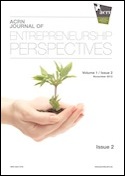ACRN Journal of Entrepreneurship Perspectives
Vol. 2, Issue 1, Feb. 2013, ISSN 2224-9729

1 Darius Saikevicius
1 Faculty of Economics, Vilnius University, Lithuania
Keywords: Mergers and acquisitions, M&A, Takeovers, Cross-border mergers and acquisitions, Announcement effect.Abstract. During the last takeover wave in the period of 2001-2009 both thevolume and the value of merger and acquisition transactions reached recordheights. Nevertheless, the question of whether mergers and acquisitions createsurplus value has never been more relevant than during the same period of 2001-2009 as well. It turned out that numerous transactions which were structuredduring the recent wave destroyed total combined shareholder value instead ofincreasing it. The general issue of value creation in merger and acquisitiontransactions is addressed in the study by analyzing a sample consisting oftransactions that took place in the New Member States of European Union duringthe period of 2004-2011. Two important questions surrounding the issue areinvestigated: the paper examines whether value creation differs in domestic andcross-border transactions and what is the effect of timing of merger andacquisition transactions in terms of economic cycle. There is no evidence foundthat transactions concluded during crisis period create more value than those atthe pre-crisis timeframe. The results of the paper support the conclusions ofprevious studies by academics that cross-border mergers and acquisitions createmore value than domestic transactions.
1 Karen L. Orengo Serra
1 Graduate School of Business Administration, University of Puerto Rico, Río Piedras
Abstract: The aim of this study is to explore the relationship between Marketorientation (MO) and Organizational memory (OM) in the market growthstrategies of family businesses. This study uses a qualitative case studyapproach involving in-depth research of six (6) family-owned small andmedium sized enterprises (SMEs) in Puerto Rico. The triangulation of datatechnique was used to obtain diversified and reliable information. We appliedcross-case analysis, and conducted pattern matching using the organizationalcomponents that support the MO and OM constructs. The components of MOand OM enable the learning and knowledge acquisition process, which is thebasis for the growth of these family firms. The context in which this study wasperformed allows us to shed light about how a combination of particularorganizational managerial skills is necessary to meet organizational andmarket expectations.
Keywords: Family businesses, market orientation, organizational memory, risk, tolerance, adaptation, proactiveness
1 Mushumbusi Paul Kato
2 Jan Kratzer
1,2 Technische Universität Berlin, Chair for Entrepreneurship and Innovation Management, Germany
Abstract. Traditionally the position of women in Tanzania has been lowcompared to men. Women are poorer, have low education and suffer fromtraditions and customary laws. Thus, empowerment of women is one of themain issues in Tanzania and beyond. Microfinance services are consideredas an entry point or a vehicle toward empowering women. However, it isalso considered that Microfinance Institutions are extorting money frompoor women through high interest rates, causing higher social pressure andin some cases lead to domestic violence. Using the quantitative andqualitative data from three regions of Tanzania, this study shows thatwomen members of microfinance institutions (MFIs) are more empoweredcompared to non-members in non-program areas. In total 454 women (305members of MFIs and 149 non-members) participated in the survey and 10women in the in-depth interviews. The data obtained are analysed usingMann-Whitney U test. The results show a significant difference between thewomen members of MFIs and non-members in the dependant variablesrelated to women empowerment. Women members of MFIs have morecontrol over savings and income generated from the business, greater rolein decision-making, greater self-efficacy and self-esteem, and greaterfreedom of mobility and increased activities outside home.
Keywords: Tanzania, microfinance, self-efficacy, empowerment, selfesteem, mobility, decision-making, control over income.
1 Savita Shankar
1 Asian Institute of Management, Makati City, Philippines.
Abstract. Financial inclusion, implying expanding access to financial services tothose currently not accessing them, is an important objective in many developingcountries. This article analyses if microfinance institutions (MFIs) adequatelybreak down barriers to financial service access in India. Two lines of enquirywere followed: the spread of microfinance penetration in the country wasanalyzed and field interviews of 103 MFI field officers were conducted. It is foundthat while MFIs do break down many barriers to financial inclusion, there arelimitations in the extent of their outreach to those excluded. First, MFIpenetration in the country is skewed and excludes some areas neglected by thebanking sector, suggesting a need for policy incentives to encourage expansion tothose areas. Second, even in areas in which MFIs operate they are unable toprovide services to some financially excluded individuals on account of theirmethods of operation. To provide greater and more long lasting access to moreindividuals there is a need for MFIs to consider adopting more flexible operatingmodels and to offer portability of accounts. There is also a case for skill basedtraining to enable greater access to MFI membership.
Keywords: Micro finance, Financial inclusion, India, Micro credit, Banking, Financial Access, Micro finance institution.